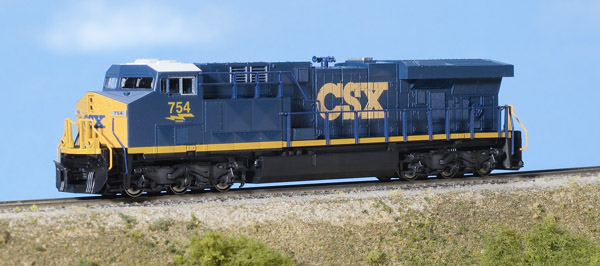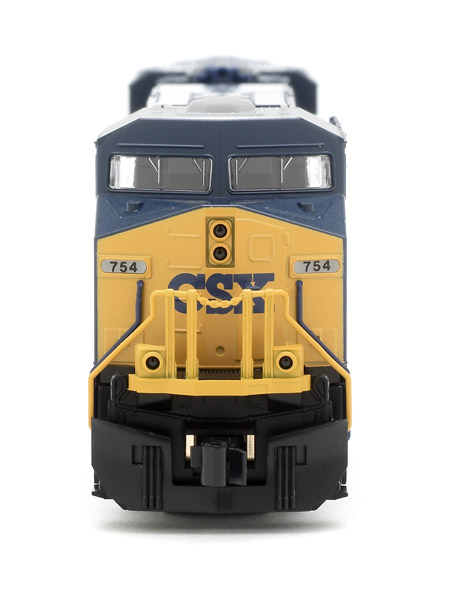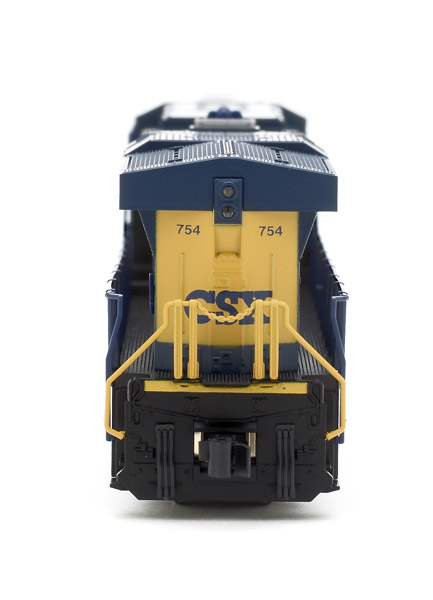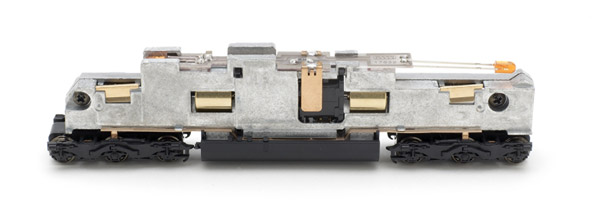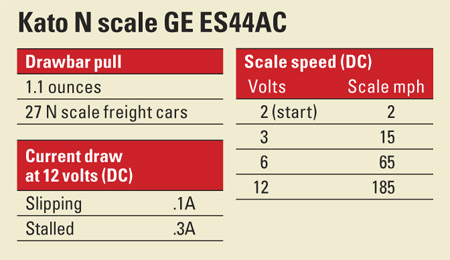The General Electric ES44AC is part of the locomotive manufacturer’s Evolution Series (GEVO) product line. Like Electro-Motive Diesel’s SD70ACe, the GEVO locomotives were developed to comply with the Environmental Protection Agency’s strict Tier II emissions standards that took effect in 2005.
The ES44AC replaced GE’s AC4400CW in the firm’s product line. The heart of the ES44AC is its GEVO 12-cylinder diesel engine that produces the same 4,400 hp as the 16-cylinder diesel in the AC4400CW but with lower emissions and greater fuel economy.
General Electric built a demonstrator unit and also sold some preproduction units to railroads such as BNSF Ry. in late 2003. Other early customers for the ES44AC were Norfolk Southern and Union Pacific. Those railroads along with Canadian Pacific, CSX, FerroMex, Iowa Interstate, and Kansas City Southern also purchased later “production” ES44AC locomotives.
The November 2004 issue of Model Railroader has more prototype information in an article including drawings of a preproduction ES44AC. Most of the dimensions and details of the preproduction locomotive are the same as the later production ES44ACs, including the length over couplers (73′-2″). The maximum height of 15′-5″ and maximum width of 9′-11″ is slightly less than that of the later production locomotives. Those measurements on a production ES44AC are 16′-0″ and 10′-3″ respectively.
All the molded detail is sharp and well defined. Separately applied detail parts include the air horn, brake wheel, global-positioning-satellite domes, and scale-profile handrails. All the windows have clear glazing, and each windshield has two molded windshield wipers.
There are some discrepancies on the model as compared to the prototype. On the engineer’s side of the cab, the lightning bolt is backwards. The lettering under the lightning bolt, which I didn’t see in prototype photos, reads “ES44AH.” The housing around the headlights should be silver, and the window on the nose door should represent tinted glass. On the model the window detail is in the correct place, but it’s painted yellow.
As on the prototype, the cab window frames are silver and the cab roof is painted white.
The motor and flywheels are encased in the frame, which also provides much of the model’s 4 ounce weight. Worm gear shafts transfer power to truck-mounted gearboxes.
None of the metal wheels have traction tires. All the axles are powered, giving the ES44AC an impressive drawbar pull. A pair of these GEVOs could haul a long unit coal or intermodal train.
The printed-circuit board is mounted on top of the frame. Light-emitting diodes on each end of the board light according to the model’s direction of travel, unlike prototype locomotive headlights. Clear plastic tubes direct the light to the headlights and ditch lights.
Board-replacement decoders are available from Digitrax (part no. DN163K1B) and Train Control Systems (part no. K1D4). For more information on these decoders, see the Digitrax (www.digitrax.com) and Train Control Systems (www.tcsdcc.com) websites.
I enjoyed running the Kato ES44AC on our Salt Lake Route layout. The painting discrepancies could be fixed by painting over the lightning bolts and locomotive classification under the cab numbers to represent no. 754 in her as- delivered paint scheme. The Kato locomotive would make a fine addition to a modern-era N scale fleet.
Manufacturer
Kato U.S.A. Inc.
100 Remington Rd.
Schaumburg, IL 60173
www.katousa.com
Road names: CSX and Canadian Pacific (two road numbers each). BNSF Ry. and Union Pacific (three road numbers each). GE Demonstrator also available.
Era: October 2003 to present
Features
- All-wheel drive and electrical pickup
- Correctly gauged metal wheelsets
- Five-pole motor with dual brass flywheels
- Kato magnetic knuckle coupler at correct height
- Light-emitting diode (LED) headlights and ditch lights
- Minimum radius: 11″
- Weight: 4 ounces





